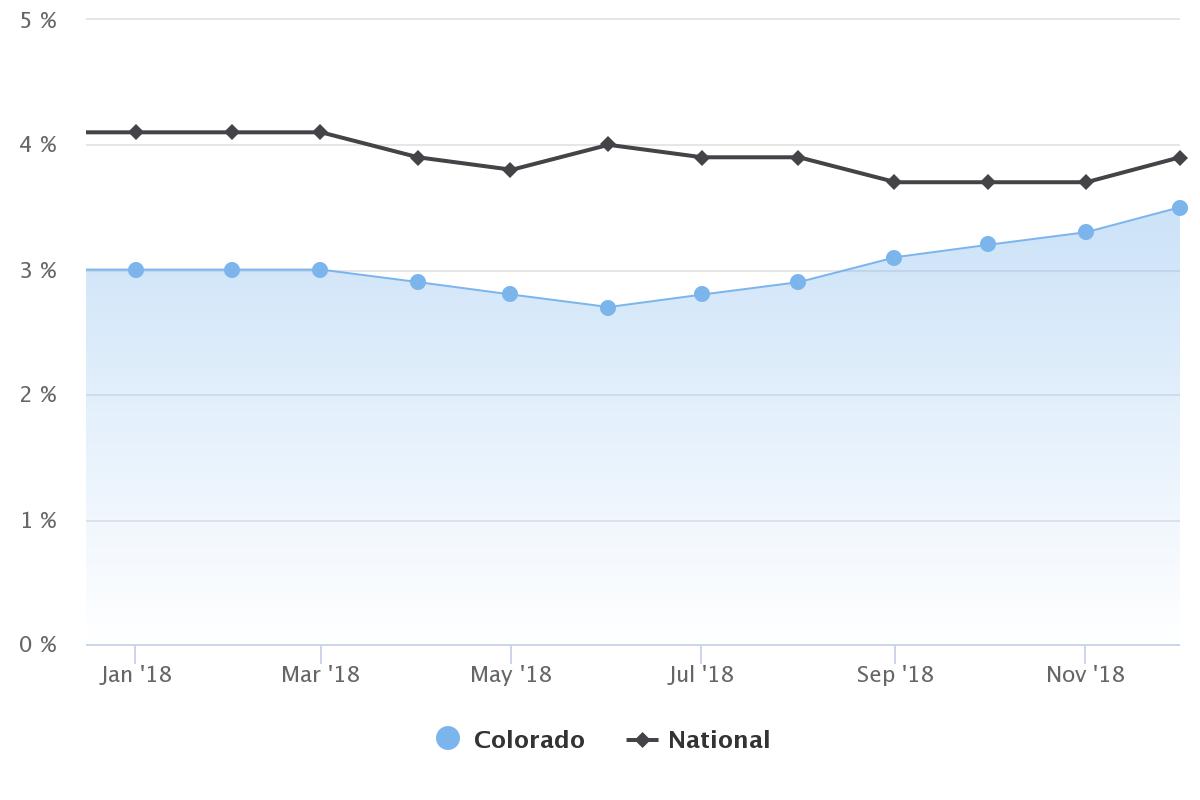
It was an extraordinary run for Colorado’s labor market in 2018. Unemployment hovered around 3 percent for the whole year with 75,400 new jobs and substantial wage growth.
The unemployment rate ended the year rising to 3.5 percent in December. The Colorado Department of Labor & Employment says that’s due to more people entering the workforce than employers can create jobs for. That should provide some relief for companies struggling to fill positions.
Still, there are few comparisons in Colorado’s history when it comes to the performance of the job market in 2018.
- Stop Us If You’ve Heard It: Colorado’s Economy Is Great (And Will Be Again In 2019)
State unemployment data goes back to 1976, and in that time, only the years before the dot com bust were better. Today’s employment growth though isn’t built on one single industry, like technology.
“This is the strongest growth since the 1990s,” said Brian Lewandowski, an economist at the University of Colorado Boulder. “Despite an increasing labor force and a slightly higher unemployment rate, it is still very much an employee’s market — tight labor market tensions will continue to be a strain for employers in the short term.”
Job growth has been widespread across all Colorado industries. Employers added high and low skill jobs throughout the year. The Professional and Business Services sector saw tremendous growth, up by 21,800 jobs for the year — these are usually educated positions, with higher wages.
There’s been big growth in lower wage jobs, too.
The Leisure and Hospitality industry — think hotels and restaurants — added 12,000 jobs over the year. It doesn’t seem to be enough to assuage concerns among hotel and restaurant hiring managers. Many more positions are expected to open, and they wonder how they’re going to find people ready to work.
It’s encouraging then that the labor force participation rate has risen steadily, up to 69.2 percent by the end of 2018. That number inches closer to the 74 percent participation rate seen before the recession. Employers can take that as a positive sign at a time when few people are unemployed. A climbing participation rate means people are coming off the sidelines to work.
That may be thanks in part to a substantial climb in wages, really the first sustained wage growth in Colorado in years. In December, average hourly wages were up 5.3 percent over December of 2017. This is, in part, a natural consequence of a tight labor supply. As demand for talent remains high, employers will have no choice but to increase wages to attract workers.
Colorado’s job market appears solid across racial lines.
The unemployment rate for Hispanics was 3.4 percent in 2018. At one point following the Great Recession, Hispanic unemployment in Colorado stood at 13.2 percent. The number of unemployed black workers rose in 2018; it’s now double the rate of whites and Hispanics. It’s not clear what led to the increase, but 6.6 percent black unemployment is still much lower than 14.7 percent during the recession.









